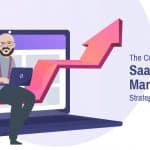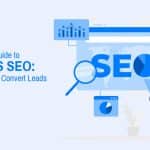Playback speed:
As the SaaS market becomes increasingly competitive, a robust SEO strategy stimulates your company’s exponential growth. By optimizing your SaaS websites, you attract more qualified leads, increase conversions, and reduce customer acquisition costs. With the power of inbound marketing, you reach potential customers who are actively looking for SaaS solutions to their needs.
However, the SaaS SEO process is not the same as for other types of businesses. SaaS companies face unique challenges, but also opportunities, when optimizing their sites and content for search engines.
Luckily, our guide covers all aspects of SaaS sites optimization, including:
- The vital role of SEO for SaaS companies
- Practical strategies for organic search success
- Technical and on-page optimization techniques
- Unique link building strategies specific to SaaS products
- Guidelines for App Store optimization
Get ready to take your SaaS site to new heights with SEO in 2024!
What is SaaS SEO?
SaaS SEO is a customized digital marketing strategy designed specifically to improve the visibility and relevance of software-as-a-service (SaaS) websites in search engines. Thus, the site attracts and converts potential customers looking for SaaS solutions. The uniqueness of the SaaS business model requires tailored strategies that go beyond general SEO practices.
The Importance of SEO for SaaS
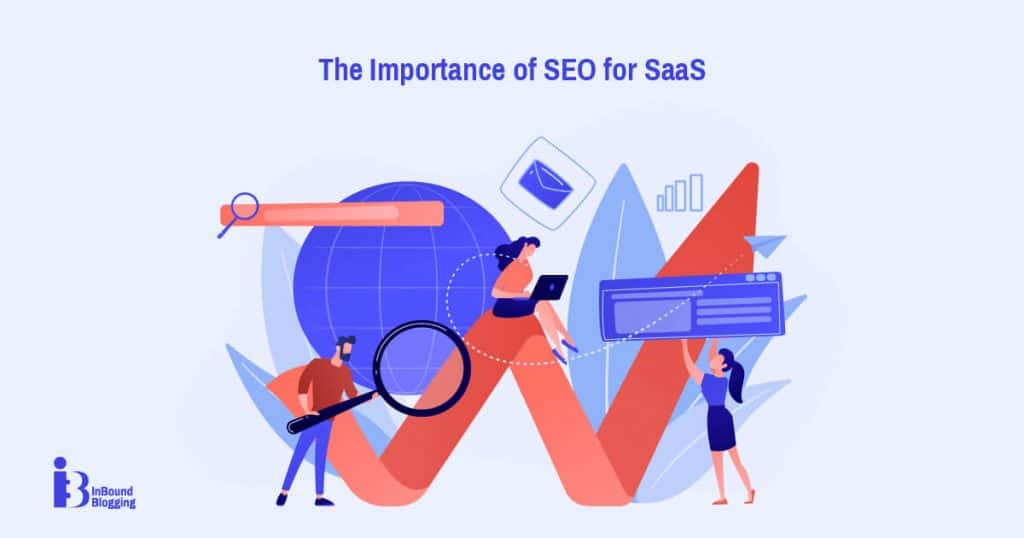
When we talk about SEO, it usually means elevating a website’s position in search engine results pages (SERPs) with the ultimate goal of drawing organic traffic. Yet, when you’re dealing with SaaS, this process takes on new layers of complexity.
In simple terms, SaaS SEO deals with:
- Keyword Research: Identifying relevant keywords that potential customers type into search while looking for the software solution a SaaS product offers.
- On-Page SEO: Optimizing webpage components, such as meta titles and descriptions, headings, and the content itself, to better target those identified keywords.
- Technical SEO: Making improvements at a website’s infrastructure level like site speed and mobile optimization.
- Content Creation: Writing top-quality content that resonates with prospects and answers their queries.
- Link Building: Obtaining backlinks from authoritative websites to enhance your domain rating and credibility.
“By speaking directly to your users through valuable and engaging content, and showcasing your brand differentiator, you can build trust and credibility. This approach will not only enhance your website’s visibility but also lead to higher conversions as potential customers are more likely to choose your SaaS solution over competitors.” – Meesha Gerhart, CEO, Redtree Web Design
Of course, these are general processes applicable to all types of SEO. However, what sets the SaaS-based approach apart includes tactics such as creating comparison pages for competing software products or leveraging customer reviews/testimonials for enhanced credibility. If implemented correctly, these practices can upscale your SaaS strategy for growth and reduce cost per acquisition—both of which are core marketing goals.
Yet, even within the realm of SaaS companies, there can be major differences in terms of customers. Some serve other businesses (B2B SaaS), while others directly cater to consumers (B2C SaaS).
Regardless of the segment, putting technical product features and benefits in layman’s terms is a common challenge. This makes quality and easy-to-understand content an integral aspect of an effective SaaS SEO campaign.
Optimizing your site or building links may seem straightforward, but without a proper list of keywords or insight into your target audience’s behavior, such SEO efforts might yield lackluster results, if any at all.
“Firstly, conduct keyword research around your product features. This will provide long-tail keyword opportunities for targeting users at the middle of the funnel. They might not know your solution exists yet, but if your content can solve their problems, then they can become customers quicker than you think.
There is also limitless opportunity at the top of the funnel. By understanding your buyer personas and creating content around topics that are important to them, you can drive limitless traffic to your site. Only a fraction will become customers, but if the content is high quality, then you will receive compounding benefits to your SEO like backlinks from sites with high relevance.” – Joe Cowman, Head of SEO, FATJOE
Above all, bear in mind that every step taken toward improving your website brings you а bit closer to achieving the ultimate purpose of driving conversions—turning visitors into paying customers. This directly contributes to growing your SaaS business.
Why Should SaaS Companies Invest in SEO?
Search Engine Optimization (SEO) is an indispensable tool in the marketing arsenal of every SaaS company aiming to get discovered by clients. Given the digital nature of SaaS products and the heavy reliance on online channels for customer acquisition, incorporating a solid SEO strategy is no longer an option but a necessity for achieving sustainable growth.
Here are the 5 key reasons why your SaaS business should invest in SEO:
- Increase Online Visibility: The higher a site ranks for different keywords on search engine results pages (SERPs), the more visibility it gets. This increases the likelihood that potential customers will learn about your SaaS product, driving qualified traffic to your site.
- Scale Your Growth Exponentially: Unlike paid campaigns, which cease to drive traffic once you stop spending money, SEO helps scale growth exponentially. Your site gains momentum over time as quality content and links keep attracting visitors and converting them into customers, even when you’re not actively investing in it.
- Reduced Cost-Per-Acquisition (CPA): Organic search, a crucial part of SEO, generally delivers a lower CPA compared to other paid channels like PPC or social media ads. Thus, SEO remains the more cost-effective approach for customer acquisition.
- Convert Traffic from Other Channels: A well-optimized site can capitalize on traffic coming from diverse sources, such as social media, referral links, or direct visitors, and effectively turn visitors into prospects and then customers.
- Gain Brand Credibility and Trust: Higher rankings in SERPs are often perceived as credibility and trustworthiness by users. A top spot on a Google result page could leverage user psychology and boost a SaaS brand reputation in the user’s mind.
Let’s look at an example of how these benefits transpire practically:
“Email marketing software” is a keyword with 2,700 monthly searches according to Ahrefs at the time of writing this article. This indicates substantial demand that’s beneficial for B2B SaaS companies providing email marketing solutions.
You write a blog post on your site titled “Best Email Marketing Software: A Comparative Analysis” offering insights about different available options, and it gets ranked high enough on SERPs. A searcher clicking through might eventually decide upon choosing your solution after comparing the pros & cons covered in the article, leading them further into the sales funnel closer to conversion.
Not only did you attract relevant organic traffic to your site, thus lowering acquisition costs, but also managed to position yourself as an expert/credible source, encouraging return visits and, possibly, referrals.
Drawing from the above discussion, it becomes clear that an efficient SEO strategy directly influences the customer journey, mapping a higher likelihood of conversion. Furthermore, it reinforces the need for dedicated resources and budget allocation toward meaningful SEO efforts to complement the bigger picture—the exponential growth of your SaaS organization.
The evolving nature of the competitive SaaS landscape requires staying updated and adopting the best SEO practices, making them a critical necessity. Constant monitoring of the market gives you a solid foundation to implement crucial elements of your marketing plan, such as:
- rich keywords integration
- outstanding content creation
- planning technical improvements
- link building and outreach tactics
- maximizing return on investment (ROI)
- heightened brand value and authority
- better positioning among competitors
Taking informed decisions now moves you a step closer to realizing your dream vision of being a leading edge in your Software as a Service niche.
SEO Strategies for SaaS Markets
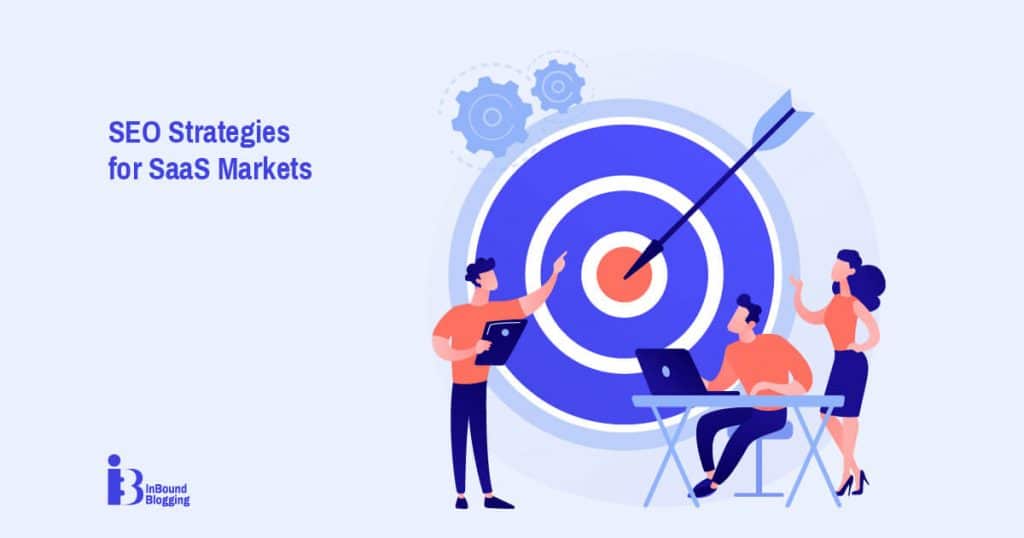
SaaS SEO is a bit different than regular SEO as it requires strategies peculiar to software businesses.
Let’s explore some of the facets of building an effective SaaS marketing SEO strategy:
- Identify Your Organic Search Competitors: These aren’t necessarily your market or product competitors but are those who appear in search results for your target keywords. Understanding their tactics will give you insights into effective SaaS strategies.
- Analyze What Works for Your Competitors: Use tools like Ahrefs, SEMrush, or Moz to find the type of content that earns them the most organic traffic, backlinks, and social shares. You can reverse engineer their strategy to your benefit.
- Provide Informative Content: Don’t use just blog posts. Diversify content with videos, podcasts, infographics, etc. The key lies in delivering values over what your customers expect from you while keeping it as insightful as possible.
- Create Comparison Pages: People often look for comparisons before purchasing SaaS products. Providing such comparison pages would solve their problem while shining a spotlight on your own software’s benefits and features.
- Dig Into Your Data (Publish SaaS Industry Insights and Studies): If you have proprietary data that could intrigue users or resolve industry queries, publish them. This sort of unique content draws in authoritative backlinks and positions your brand as an industry thought leader.
- Leverage Customer Reviews and Testimonials for SEO Benefits: Customer reviews not only instill trust in prospects but also create chances for strategic keyword placement. They also enhance local SEO rankings if utilized effectively.
Here’s how some of these strategies work:
When we talk about creating comparison pages, imagine having a page that compares common CMS platforms like “WordPress vs. Joomla vs. Drupal.” As these pages feature high-competition keywords such as “WordPress,” they’re likely to fetch considerable organic traffic. When writing such pages, you must stress the uniqueness of your SaaS product and compel visitors toward conversion.
Similarly, when addressing customer testimonials, consider featuring detailed stories where customers narrate how they managed to overcome challenges using your SaaS solution. This not only substantiates claims made by you through unbiased evidence but also subtly highlights particular strengths that set you apart from competitors.
Likewise, leveraging available data provides scope and educates the audience with exclusive insights. This is an ideal opportunity to demonstrate niche authority with factual numerical statistics. Such content is more likely to get shared across social media, bringing you backlinks, visits, and enhanced visibility.
By developing a balanced blend of the aforementioned SEO tactics, you’re moving toward meeting your SaaS goals. Your pre-set vision should culminate in time leading you to the much-desired growth and a stable company future.
Technical SEO for SaaS Sites
Technical SEO deals with a SaaS site optimization structure, making the crawling and indexing process smooth for search engines like Google. These two technical elements must be in trim so your content gets noticed and stored in the search engine database.
Let’s unfold various technical SEO techniques for SaaS sites:
- Create a Keyword-Driven Site Structure: Your website must target keywords related to your business, and your main pages must be based on them. This determines how search algorithms interpret the context of your site content and aids in better crawling.
- Website Speed Optimization: Speed is a confirmed ranking factor. SEO tools such as Google PageSpeed Insights and GTmetrix are extremely helpful to analyze your current website speed and adopt suggested improvement measures.
- Consistency Between Desktop and Mobile Devices: With Google’s transition to mobile-first indexing, it becomes vital to have a responsive design with consistent content across desktop and mobile site versions.
- Prioritize Coding Over Using Excessive Images: While aesthetics matter, over-reliance on images can slow down loading speed, which might hamper user experience as well as rankings.
- Include Structured Data for SaaS Products and Features: The Schema.org markup for SaaS products/features generates rich snippets that stand out in SERPs, which improves click-through rates (CTR).
“Utilizing Schema markup is recommended by industry professionals. This form of microdata helps search engines understand your content better, leading to richer search results. This, in turn, can boost your visibility, click-through rates, and ultimately, customer acquisition.” – Ranee Zhang, VP of Growth, Airgram
Let’s back some of these statements with examples:
If you optimize website speed, each second you save on page load time correlates directly to higher customer satisfaction and lower bounce rates, which impacts session duration and the number of pages viewed per session. This influences engagement rate metrics positively, which subsequently contribute toward bettering SERP rank positions.
Similarly, having a keyword-based architecture means that when someone looks up “B2B SaaS,” you can rank in SERPs with a homepage, category, subcategory, or blog page about B2B SaaS depending on your internal linking hierarchy and which page you plan to rank for that term.
In addition, clean code websites seem overtly technical and less fancy compared to modern-looking sites with heavy imagery. Although the latter provide a better user experience and are more appealing to the eye, if they don’t load fast, impatient visitors will just leave. That wouldn’t be beneficial for the SaaS product you’re selling. You must decide how to make a compromise on that.
Technical SEO requires dedication if you want to reach the desired heights in SERPs and reap the benefits of growth.
On-page Optimization Techniques for SaaS Websites

On-page SEO refers to the optimization you do for each individual webpage to boost its Google position. Here are crucial on-page SEO techniques you should integrate into your SaaS site:
- Conduct In-Depth Topical Keyword Research: Discovering relevant SaaS keywords and incorporating them strategically throughout the site is foundational to on-page SEO.
- Optimize Title Tags and Meta Descriptions: These essential HTML elements must be keyword-optimized and accurately reflect the content they represent. SERPs display them as snippets in result listings, and they directly impact click-through rates.
- Voice Search Optimization: Voice search is gaining popularity due to the increased IoT devices usage. So it’s essential to optimize high-ranking pages for natural language queries, called long-tail keywords in SEO. Typically, in voice search, they are in the form of questions.
- Featured Snippets: Get ahead of your competition by structuring pages to target featured snippets. If your strategy is successful, you’ll get rewarded with more clicks, traffic, and possibly conversions.
- Minimize Image File Sizes: Large-size images load slowly and interrupt page speed, affecting user experience and rankings. Compressed image formats without compromising visual quality would maintain the balance between appealing aesthetics and loading speed benchmarks.
Now, let’s look at what it would be like to put these ideas into practice:
For example, if you are selling project management software, keyword research might reveal terms such as “best project management tools,” “project management software reviews,” or “project management software comparison” as commonly used phrases referring to the main keyword we mentioned at the beginning. So you can use all of them within your content to focus your efforts on the topics that resonate with prospective buyers.
When it comes to optimizing meta tags for “project management software,” your title tag can be read “Best Project Management Software: Tools and Reviews – [Your Brand Name].” The meta description must highlight the unique value of the page to pique the interest of searchers so they’d want to click and learn more.
For a voice-optimized search, you could create a FAQ section answering queries like “What is the best project management tool?” or “Which project management software has the best features?”. All important key phrases are embedded naturally within, thus increasing the chance of showing up in search results.
As for image optimization, including descriptive alt text (accompanying text explaining what’s on the image) can help search engines understand context relevance. When incorporating primary or secondary keywords in image alts, you increase the likelihood of appearing in Google image search. This could also boost website traffic.
Just being on the web isn’t enough anymore. Today’s digital age demands dynamism, commitment, and a well-thought-out strategy to fulfill your SaaS business goals to the maximum.
“As a scale-up, we are competing against well-established industry players vying for top-performing keywords. In response, we have decided to focus on niche and localised keywords to stand out and compete, as well as produce high-quality content in collaboration with like-minded non-competitive partners that align with our target audience’s needs and pain points. The strategy behind this has been two-fold. Firstly, our SEO experts meticulously optimise the content using proper on-page SEO techniques to ensure that our content ranks well in search engine results pages (SERPs). Secondly, we capitalise on building backlinks to leverage our partner’s audience and domain authority, driving targeted traffic to our platform.” – Alex Stevens, Head of Marketing, RoomRaccoon
Link Building Strategies Specific to SaaS Products
Link building is an integral part of SEO for SaaS startups or any internet-based businesses. Quality inbound links indicate the credibility of your website to search engines, which boosts rankings.
Let’s go over some practical link building strategies tailored especially for SaaS products:
- Digital PR Strategy: This involves reaching out to journalists or influencers who are interested in covering your product or industry and earning valuable backlinks from them.
- Podcast Appearances: Podcast hosts always look for experts on various topics. Being a guest on relevant podcasts can get you a credible backlink from their site.
- Help A Reporter Out (HARO): It’s a free service that connects reporters with sources/experts. By providing valuable input to articles, you can earn authoritative backlinks.
- Tactical Link Building Strategies:
- Building Linkable Content Assets: This refers to creating valuable content, such as stats, case studies, guides, reports, and infographics that encourage others to naturally link back to you.
- Manual Outreach: Look for non-competitive websites in your industry or related niches that have a high domain authority and would be a valuable resource for your target audience, and offer them your linkable content assets as relevant and reliable information sources.
- Guest Posting: Write insightful and high-quality posts on other sites in exchange for a link. But first, evaluate their relevance, audience interests, and domain rating.
- A-B-C Link Exchange: Instead of directly exchanging links with other websites, consider a more indirect approach and offer them a link from another website.
- Broken Link Building: Request for link placements when you identify sites with broken links that might find your content useful.
Consider these examples:
- If you’ve recently launched a ground-breaking SaaS product that aids project management more efficiently than ever before, reach out to influential bloggers or podcast hosts to showcase the helpfulness of your unique product. This may result in linked mentions in blog posts and invitations to podcast shows. You will not only receive backlinks but also will be able to talk about the benefits of your innovative SaaS software.
- Imagine coming across a HARO request by a reporter seeking suggestions for the best project management tools. Pitching your product by referencing particular areas where it offers improvements can get you a link from a reputable media outlet to your SaaS startup. Do this a couple of times, and you’ll have high-authority links that add trustworthiness to your site in search engines and create a solid image among industry peers.
- Developing a comprehensive, never-seen-before, stats-packed report demonstrating the evolution in the workplace environment due to technological advancements, can get you cited across varying platforms. Thus, you’ll strengthen your link profile significantly.
So link building can lead to surpassing the competition, expanding your business horizons, tremendous growth in popularity, and overall SEO success.
App Store Optimization for SaaS
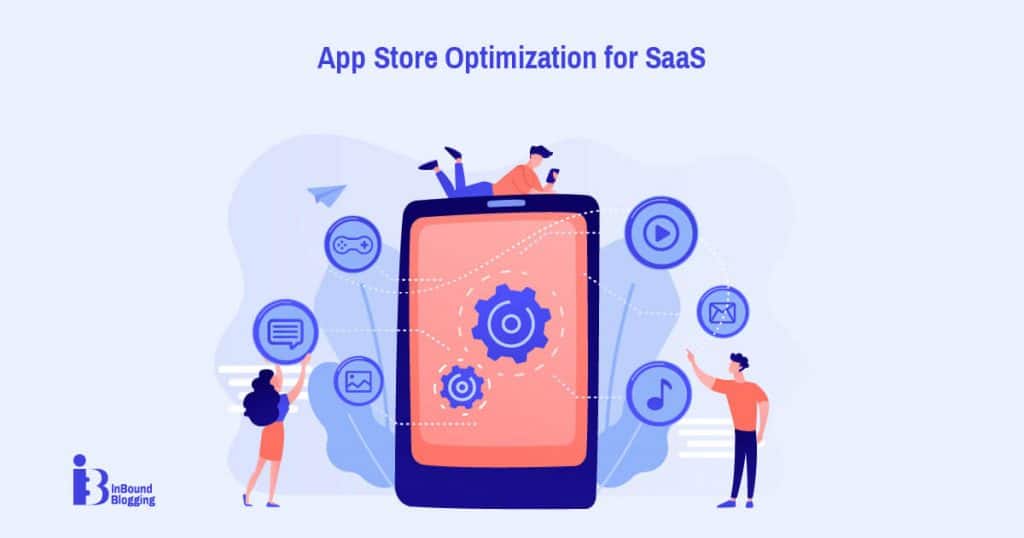
For SaaS products that have a mobile app, App Store Optimization (ASO) is crucial for visibility and user acquisition. Here’s how to approach ASO:
- In-App Store Tactics and Optimization Tips:
- App Details: To get more clicks, your app title should explain in a few words what the app does. A clear description of its functionalities can encourage downloads.
- Keyword Fields: Use tools like Sensortower or Mobile Action to research keywords relevant to your SaaS product that will bring organic downloads.
- Thumbnail Images and Screenshots: Using screenshots or videos showcasing product functionalities can significantly increase click-through rates as well as download rates.
- App Ratings and Reviews: Apps with positive reviews and good rating gain higher organic rankings and credibility. Encourage users to leave reviews after they’ve been using the product for some time.
- Presentation of the App Store Product Page: A clean layout with clear call-to-actions influences users’ decisions in installing the application.
- A/B testing: Experiment with different keywords, screenshots, descriptions, etc., refining them from time to time based on obtained results.
- Conduct Regular App Updates
Maintain development cycles addressing bugs, user concerns, new features, or enhancements. Regularly updated apps are favored not only by stores’ algorithms but also by users, who appreciate brands responding to feedback and making constant efforts to improve products/services.
Let’s illustrate these points below:
If you own a productivity app, having it keyword-optimized for terms like “task management,” “project collaboration,” or other similar phrases increases its discoverability. Maintaining a healthy rating through focused customer support, a user-friendly interface, continuous improvements, and bug fixes push you further up store listings. This way, potential customers can find you easily, and you can earn an install or purchase. You also position yourself as a top player in your SaaS app target market.
Keep an eye on performance metrics to understand how your changes impact KPIs. Meet your audience’s needs better, go the extra mile, and pay attention to details. This can shoot you way before the competition. With an outstanding approach to customers, you distinguish yourself from the crowd.
Constant innovation and optimization in a tech field like SaaS can send you on a growth-inducing journey in pursuit of success.
How Can InBound Blogging Help?
In today’s fast-paced tech world, many SaaS companies face stiff competition. The need for a robust strategy to propel business growth has never been more imperative.
This is where InBound Blogging comes in. We are an SEO agency specializing in formulating and implementing result-driven SaaS strategies.
Overview of InBound Blogging
Equipped with seasoned marketers and content creators, InBound Blogging crafts custom strategies that cater specifically to the demands of the SaaS space. Our specialists have proficiency with different SEO tactics. We use the knowledge gathered through years of experience, follow the latest digital SaaS trends, and analyze your specific situation to provide the best solution.
InBound Blogging’s services include:
- SEO for SaaS Companies
- SaaS Keyword Research
- SaaS Content Marketing Strategy
- Technical SEO for SaaS
- SaaS On-Page SEO
- Link Building for SaaS
Our services are also aimed at building brand authority and product recognition across the web. With tactical SEO solutions, we add value to your SaaS company.
Why Choose InBound Blogging’s SaaS SEO Services?
✅ Keyword Strategy Mastery: We conduct thorough SaaS keyword research, selecting the best topical terms and phrases as part of a tested strategy that drives real organic traffic. We also target keywords with high business potential that are more likely to drive conversions.
✅ Technical SEO Expertise: We optimize your SaaS site performance following the best technical SEO practices.
✅ Quality Content Creation: We write informative content tailored to your specific audience to drive engagement and conversions.
✅ Authoritative Link Building: We run effective link building outreach campaigns to ensure optimal visibility and discoverability of your SaaS business online.
✅ Track Record in Successful SaaS SEO: At InBound Blogging, we have helped Saas businesses turn their fortunes around with solid SEO strategies.
Choose InBound Blogging as your success partner. Let us help your SaaS website thrive!
Measuring SEO for SaaS Business Success
Running a successful SEO campaign demands more than just devising and implementing strategies. Emphasize tracking and measuring the success of these strategies to monitor their effectiveness.
So, how exactly can you measure a SaaS SEO plan success?
Let’s delve in:
Essential SEO Metrics to Monitor for SaaS Websites
- Organic Traffic: Refers to the visitors landing on a webpage via unpaid search. An increase in organic traffic typically indicates effective SEO practices.
- Bounce Rate: The percentage of visitors who navigate away from your site after viewing only one page. A low bounce rate suggests that users find your content engaging.
- Dwell Time: This measures how long a visitor stays on your page before returning to the SERPs. Higher dwell time often means that visitors see your content as useful.
- Conversion Rates: The percentage of website visitors who complete desired actions (sign-ups, purchases, etc). Increasing conversion rates are a primary goal for most businesses, including SaaS companies.
Set Up Analytics Tools for Tracking SaaS SEO Results
Having reliable tools at hand for data collection and analysis is paramount for effective SEO measurement.
Here are four of the top tools:
- Google Analytics: Google’s comprehensive analytics tool helps you keep tabs on various metrics, such as organic traffic, number of users and sessions, bounce rate, dwell time, and many others.
- Google Search Console (GSC): Google Search Console is a free tool provided by Google that helps businesses monitor, troubleshoot, and optimize their website’s visibility in Google’s search results. It should be an essential part of any SaaS company’s SEO strategy.
- SEMRush: SEMRush enables you to track keywords along with offering a plethora of other features like backlink audit, content marketing, competitive analysis, position tracking, etc.
- Ahrefs: Ahrefs specializes in backlink analysis, but also offers numerous other analyses, such as a keyword research tool, monitoring competitors’ data, site audit, rank tracking, etc.
Each tool comes with its unique functionality so it comes down to picking what works best for your needs. However, setting up Google Analytics is an SEO must. Then, you can choose one of the other two options or both if your budget allows it.
Make Data-Driven SEO Decisions
Basing strategic decisions on collected SEO data gives you a solid numeric ground to step on. Using this data helps not only improve existing content but gives insight into building a plan for a stronger SaaS content and SEO strategy that will position you well ahead of the competition.
That’s why consistent tracking of results is necessary to gain valuable insights through every stage of the SEO journey, allowing you to pivot strategies or double down when spotting winning tactics. All these SEO efforts are targeted toward achieving continual growth for your SaaS business.
“Based on some of our clients’ success, you need to test, measure, and analyze your website data to understand what works and what doesn’t.
Once you know the ins and outs of your website, you can start tweaking different elements like page speed, text optimization, quality content, and user experience. This will help you keep up with the competition and attract more customers to your business. It’s also important to stay on top of SEO trends, as this is critical for improving your search rankings.” – Ron Evan Del Rosario, SEO Link Building Manager, Thrive Digital Marketing Agency
Conclusion
In the fast-paced SaaS world, standing out in an oversaturated market can be challenging. Every day, SaaS startups emerge with new and innovative solutions that compete for your audience’s attention. However, with a cleverly planned SaaS SEO strategy in 2024, your business can rise above the noise and find its own path to sustainable growth.
With the right SEO partner, you can rise to unimaginable heights and achieve the desired visibility, traffic, and conversions. However, a well-thought-out SEO strategy goes beyond those metrics. It also adds value by building trust in your product and brand. Keep that in mind when choosing a partner.
FAQ
How does keyword research play a role in SaaS SEO?
Researching keywords plays a crucial part in SaaS SEO. It refers to identifying and analyzing relevant key terms that resonate with the targeted audience and industry. By knowing which keywords customers use to find your services, you can optimize your website and content around them to increase your chances of higher rankings.
Why is SaaS SEO important for growth and visibility?
SaaS SEO is important for growth and visibility as it aids your site to position higher in search results, making it easier for potential customers to find you. It also increases your SaaS website authority, which can lead to more traffic, leads, and conversions.
Why is SEO important for B2B SaaS companies?
SEO is important for B2B SaaS companies because it improves online visibility, attracts targeted traffic, generates leads, and increases the chances of converting leads into paying customers. It allows B2B SaaS organizations to compete with larger players in the field and establish themselves as industry leaders.
How can I create content that ranks well in search engines?
To create content that ranks well in search engines, you must provide valuable, up-to-date, and relevant information to your target audience. Run keyword research to spot the terms your potential customer searches for and incorporate them naturally within content. Additionally, optimize it for readability, use headings/subheadings, and add images.
What are some recommended SEO tools for SaaS businesses?
Some recommended SEO tools for SaaS businesses are Google Analytics, Screaming Frog, Google Search Console, SEMrush, Moz, and Ahrefs. They help with keyword and on-page optimization, technical SEO, backlink analytics, and tracking overall SEO results.
What is the role of content marketing in SaaS SEO?
The role of content marketing is crucial to SaaS SEO. By creating valuable and relevant pieces of content, you attract organic traffic, engage your target audience, and establish your brand as a trusted industry authority. Content marketing also supports your SEO efforts by providing opportunities for keyword optimization, internal linking, and attracting high-quality backlinks.
What is the best SEO strategy for my SaaS company?
The best SEO strategy for your SaaS company depends on your specific objectives, potential buyers, and industry. It is recommended to look for topical keywords, optimize existing site content and regularly create new one, build authoritative backlinks, and adjust your SEO strategy based on data and performance metrics.
How can SEO agencies or specialists help my SaaS business?
SEO specialists or agencies can help your SaaS business by providing expertise, resources, and strategies to improve organic positions. They specialize in:
– developing an in-depth keyword research strategy
– improving your content
– performing technical SEO audits
– managing your backlink profile
– providing ongoing monitoring and analysis of your SEO performance
Hiring professionals saves you time and ensures your SEO efforts are invested in actions that are effective and up-to-date with industry standards.
How can implementing SEO can benefit a SaaS business?
Implementing SEO for SaaS benefits the business by increasing its online visibility, driving qualified traffic and leads, improving brand awareness, and ultimately boosting sales.
How does technical SEO contribute to SaaS SEO strategies?
Technical SEO involves optimizing technical elements of a website, such as site and URL structure, page speed, mobile responsiveness, meta tags, schema markup, and more. When a website is technically fit, search bots crawl and index its pages more effectively, leading to better positioning and visibility.
What are some content strategies that work well for SaaS SEO?
Some content strategies that work well for SaaS SEO involve creating informative blog posts, whitepapers, ebooks, use cases, videos, and webinars. Additionally, user-generated content, long-tail keywords, and regular updating and repurposing of existing content can also be effectively incorporated into the strategy.
How do SaaS companies turn SEO into a competitive advantage?
SaaS companies can turn SEO into a competitive advantage by following the best practices, which include:
– identifying and targeting keywords that their competitors may not be optimizing for
– writing in-depth unique content
– improving technical website aspects
– building authoritative backlinks
– utilizing social media and other marketing channels
By implementing a comprehensive and strategic SEO approach, SaaS companies can gain a competitive edge in their industry.
